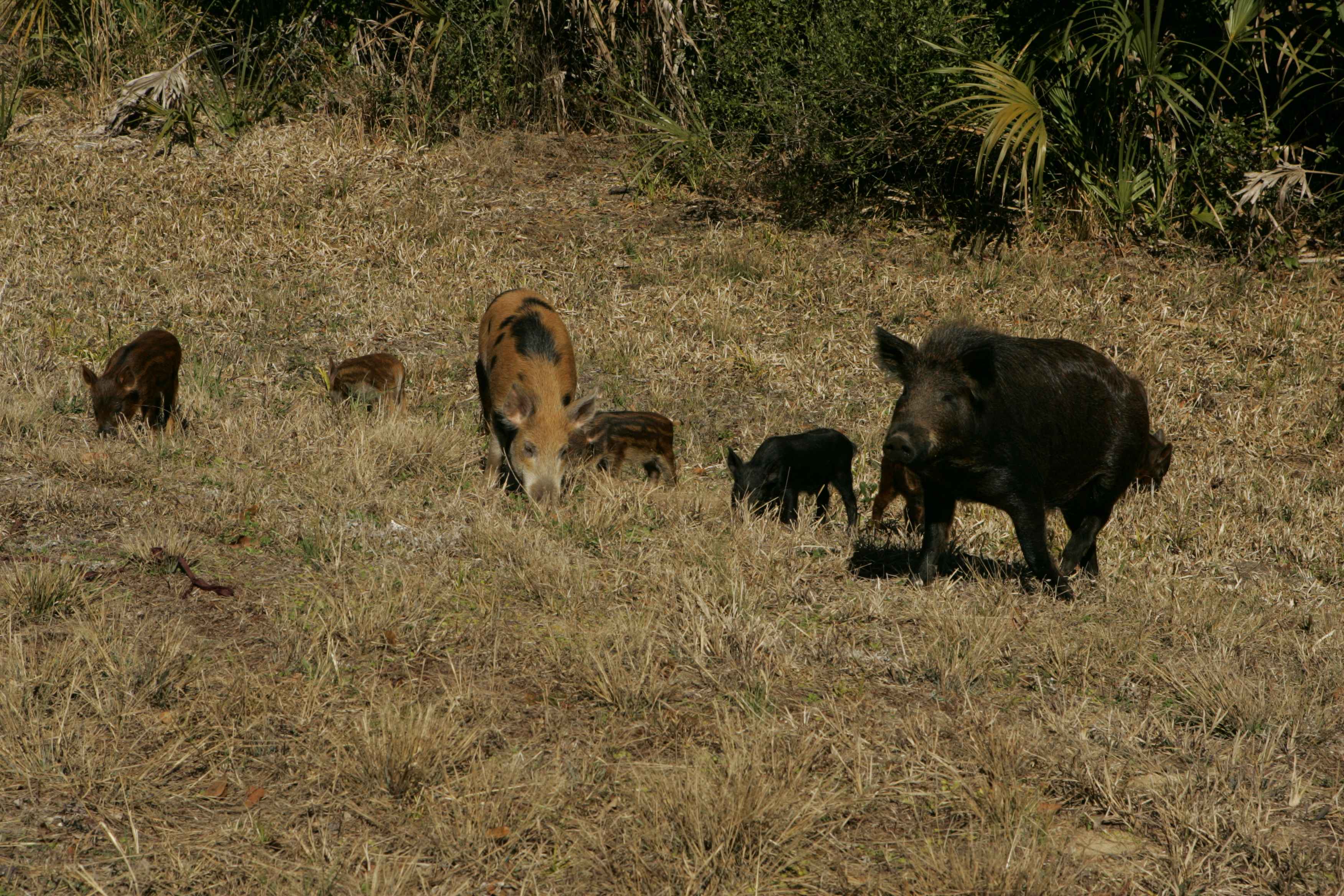Toxoplasmosis, Trichinosis, Feral Pigs, and Hunters
The Professor's Blog 03.26.13

As promised in previous blogs, I will continue to highlight more of our research on diseases in feral swine in eastern North Carolina.
Today, the feral pig population in the United States is estimated to be 4 million animals across 39 states, with large populations in California, Texas, and the Southeast. Feral pig numbers are expected to continue to grow because feral pig populations can double every 14 months. The increasing feral pig population has resulted in more feral pig interactions with domestic swine and humans and increased risk of transmission of zoonotic (can be transferred from wildlife to humans) disease agents, including the parasites Toxoplasma gondii and Trichinella spiralis.
Toxoplasma gondii is a protozoan parasite that infects domestic animals, wildlife, and humans (once transmitted is called Toxoplasmosis) through the uptake of oocytes, the infective stage. The oocysts are shed into the environment by a definitive host–cats. If oocysts are ingested by a non-cat host, including humans, the parasite will invade and encyst in muscle tissue and organs, causing flu-like symptoms in humans with the possibility of more serious complications in those with weakened immune systems. Further, transmission of T. gondii may occur by consumption of parasites encysted in muscle tissue, including improperly cooked meat. In feral pigs, it is unclear whether infections primarily occur by ingestion of oocysts from the environment (i.e., soil or water), or from ingesting muscle cysts in prey or carrion. Remember, feral pigs are opportunistic omnivores that feed by rooting and grazing, they will eat almost anything including vegetation, vertebrates, and invertebrates.
Trichinella spiralis is a widely distributed nematode (roundworms) parasite that has a direct life cycle and can be transmitted directly to mammals and humans. Infection of T. spiralis in humans (which is called Trichinosis once transmitted) is commonly associated with ingestion of raw or undercooked game meat and may become clinical, potentially leading to human fatalities. Similarly, domestic pigs may become infected by ingesting T. spiralis-laden tissue of other omnivorous or carnivorous species, by ingesting feces containing gravid nematodes, or by cannibalism.
We conducted a survey of feral pigs from eastern North Carolina to determine exposure to the zoonotic parasites, Toxoplasma gondii and Trichinella spp. During the research, we sampled 83 feral pigs over two years and determined an antibody prevalence of 28 percent for T. gondii and 13 percent for Trichinella spp; three feral pigs (7 percent) had antibodies to both parasites. As expected, we detected an increased risk of T.gondii antibodies with age; older feral pigs were more likely to be infected than younger pigs.
As for domestic farm-raised swine in the USA, the prevalence of T. gondii is reportedly zero, which has been reduced from previous levels by the implementation of modern biosecurity on commercial production farms. Interestingly there has not been a corresponding decrease in human exposure to T. gondii based upon antibody prevalence, which remains around 15.8 percent of the adult human population. It is believed that human exposure is being maintained from an underestimated or increasing oocyst presence in the environment and not from domestic pork consumption, and it is suspected that domestic cats may play a role in human prevalence to T. gondii. Indeed, surveys of domestic cats in the USA have shown T. gondii antibody prevalences from 8 to 74 percent; up to 2% percent of feral cats may be shedding oocysts at any time, and an infected cat can shed more than 100 million oocysts in its feces. Oocysts are very resilient and can survive in the environment from 46 to 410 days and survive in water up to 54 months. The role of feral cats in the environment will be covered in an upcoming blog!
Although only felids shed T. gondii oocysts, several native wildlife species may serve as potential intermediate hosts, including raccoons, whitetail deer, several species of rodents, striped skunk, opossum, and numerous species of birds. Feral pigs may consume all of these species as prey or carrion, thus ingesting infective T. gondii cysts.
Modern market farm production practices have nearly eliminated T. gondii and T. spiralis infection from pork; however, the recent trend toward ‘‘organic’’and “free-ranging” pig production has increased domestic pig exposure to infection and the possibility of human infection through pork consumption. Further, the possibility of feral pigs as sources of infection to humans and domestic swine has increased.
As mentioned when I discussed Brucellosis and Tularemia, hunters should be careful when cleaning feral pigs and to properly cook the meat. Both Trichinella spp. and T. gondii can survive normal refrigeration and it is believed that some cysts can survive for weeks even when frozen at 17o F. Conversely, when cooked at even heat T. gondii cysts are killed above 160o F. In humans, if diagnosed early, Trichinosis and Toxoplasmosis can be treated and full recoveries are expected.
I hope you continue to follow this blog and I encourage you to ask questions. I will answer them in upcoming blogs.

